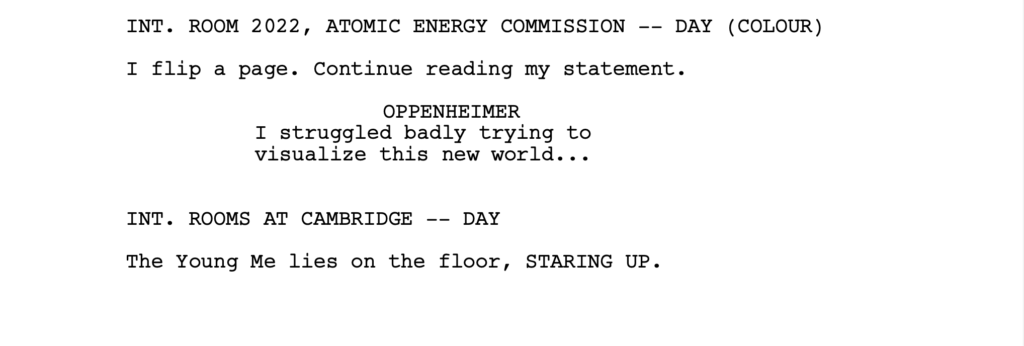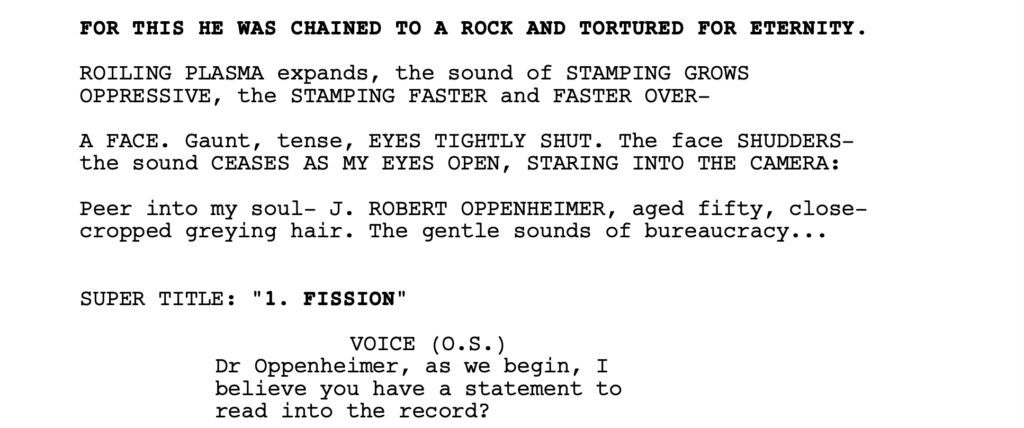Okay, so now we’re getting granular AF.
Luckily, the difference between the two is super easy.
What’s an em dash and when can it be used?
The double dash (–) is also called the em dash (as opposed to an en dash, which is one line). You can use them either in dialogue or in action lines; in dialogue, it’s best to use it when a speaker is interrupted.
Let’s look at Nyad
Let’s look at a quick example from Nyad. Here, Bonnie Stoll (Jodie Foster) interrupts Diana Nyad (Annette Bening).

As a matter of style, some may say that Bonnie may want to have two dashes before “Come.” That’s fine, but to me, it makes the dialogue look as though Bonnie is continuing Diana’s thought (as opposed to interrupting it). Again, both versions are fine.
What about the ellipsis?
The ellipsis, which consists of three dots (…), is used when the speaker trails off, seems lost in thought, or slows his cadence when speaking.
Let’s look at example from Oppenheimer.


Here, Oppenheimer (Cillian Murphy) starts a thought in the present and continues it in narration through voiceover in the past.
Em dashes and ellipses can also exist in action lines.
If you check out last week’s montage article, you can see that em dashes are somewhat crucial to montage formatting. Here’s a quick sample:

Note how here the em-dash separates out the location at the beginning of the sentence.
Here’s another example from Oppenheimer.

Note how the ellipses help here poetically describe Oppenheimer’s world with “the gentle sounds of bureaucracy.”
Can you ever use the en-dash?
Of course! En-dashes (or one dash) are typically used in the slug lines of movies (if em dashes aren’t). (If you look at the Oppenheimer example directly above, you’ll see one after “soul”).
Except for sluglines, I typically avoid them. As for em-dashes versus ellipses, neither is better than the other; they tend to have different stylistic intentions.
Whatever you do, just be clear, concise, and consistent…

